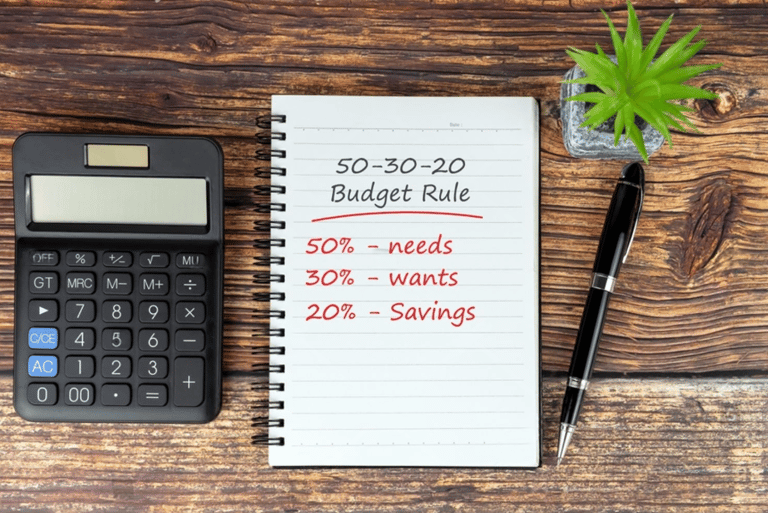The 50/30/20 Budget Rule: How to Make It Work in 2025
Introduction In 2025, managing your finances is more critical than ever due to economic uncertainties like trade tensions and inflation. The 50/30/20 budget rule, popularized by Senator Elizabeth Warren in her book All Your Worth: The Ultimate Lifetime Money Plan, offers a simple yet effective framework to balance your spending and savings. By allocating 50% of your after-tax income to needs, 30% to wants, and 20% to savings or debt repayment, you can achieve financial stability. This guide explores how to apply the 50/30/20 budget rule in 2025, with practical tips and AI-driven tools to help beginners take control of their finances. Let’s dive into this budgeting method to empower your financial journey with Personal Finance AI .
7/15/20253 min read


Why the 50/30/20 Rule Matters in 2025
With global growth projected at 3.3% and U.S. growth at 2.3%-2.8% in 2025, according to the IMF and World Bank, economic challenges like rising tariffs and inflation make budgeting essential. The 50/30/20 rule provides a flexible structure to manage expenses, enjoy life, and build a financial safety net. A 2025 NerdWallet survey found that 65% of Americans who budget regularly report reduced financial stress, highlighting the rule’s effectiveness.
Understanding the 50/30/20 Budget Rule
The 50/30/20 rule divides your after-tax income into three categories:
Needs (50%): Essential expenses like rent, utilities, groceries, transportation, and minimum debt payments.
Wants (30%): Discretionary spending on non-essentials like dining out, entertainment, and subscriptions.
Savings and Debt Repayment (20%): Contributions to emergency funds, retirement accounts, investments, or extra debt payments.


How to Implement the 50/30/20 Rule in 2025
Step 1: Calculate Your After-Tax Income
Determine your monthly take-home pay after taxes and deductions. For example, if your gross income is $5,000 and taxes withhold $1,000, your after-tax income is $4,000. Use tools like NerdWallet’s Budget Calculator ([www.nerdwallet.com]([invalid url, do not cite])) to simplify this step
Step 2: Categorize Your Expenses
Needs ($2,000 for $4,000 income): Include rent ($1,200), utilities ($200), groceries ($400), and car payments ($200).
Wants ($1,200): Cover dining out ($300), streaming services ($50), and hobbies ($150).
Savings/Debt ($800): Allocate to emergency funds ($400), retirement ($300), and extra debt payments ($100).
Step 3: Track and Adjust
Use budgeting apps like YNAB or Mint to track spending. Review monthly to ensure you stay within percentages, adjusting as needed for unexpected expenses.
Step 4: Automate Savings
Set up automatic transfers to savings or retirement accounts on payday. For example, schedule $400 to an emergency fund and $300 to a 401(k) to meet the 20% savings goal.
Adjusting the Rule for Your Situation
The 50/30/20 rule is flexible. In high-cost areas, needs may exceed 50%, requiring a 60/25/15 split. If you have significant debt, allocate more to the 20% category. For freelancers with variable income, calculate averages and prioritize savings during high-earning months, as suggested by Bankrate.
AI-Driven Tools to Simplify Budgeting
In 2025, AI-powered tools make budgeting easier:
YNAB: Tracks expenses and categorizes them into needs, wants, and savings.
Mint: Offers free expense tracking and budget alerts.
Personal Capital: Combines budgeting with investment tracking for long-term goals.
Cleo: Uses AI to analyze spending and suggest savings, ideal for beginners.
These tools, highlighted by Investopedia, streamline the 50/30/20 rule, ensuring you stay on track.
Challenges and Solutions in 2025
Rising Costs: With inflation projected at 1.7%-1.9% in the EU and U.S., per the European Commission, cut wants or negotiate bills to stay within 50% for needs.
Variable Income: Average your income over six months and create a buffer for lean periods.
Debt Load: Prioritize high-interest debt in the 20% category to reduce financial strain.
Conclusion
The 50/30/20 budget rule is a powerful tool to navigate 2025’s economic challenges. By balancing needs, wants, and savings, you can achieve financial stability and reduce stress. Start by calculating your income, categorizing expenses, and using AI-driven tools like YNAB or Mint. For more personal finance tips, explore our posts on grocery savings and investing at Personal Finance AI. Subscribe to our newsletter for the latest AI-driven financial advice!


Connect
Join us for insights on personal finance and AI.
Subscribe
Contact
© 2025. All rights reserved.